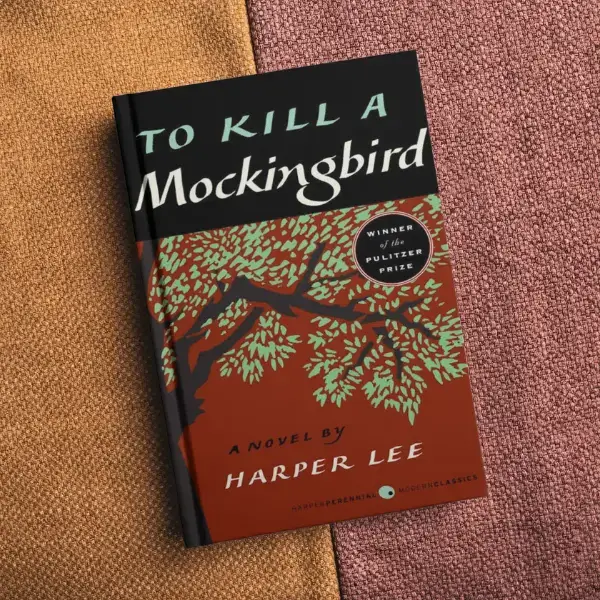I was a teenager when I started to read To Kill a Mockingbird by Harper Lee, but at the time, I wasn’t quite aware or mature enough to fully grasp its depth. The story, set in the small, Southern American town of Maycomb, Alabama, goes far beyond its surface. When I decided to re-read the novel this month, I discovered just how intricate the Finches’ journey truly is. What initially felt superficial as a young reader turned into a richly layered exploration of justice, morality, and community.
This time, the book’s ability to focus on both the personal and societal struggles of its characters amazed me. The story draws you into the heart of Maycomb, portraying life with authenticity while delving into profound themes. It’s fascinating how the Finches’ experiences reflect both individual resilience and collective challenges. I now understood how the book transcends its time, making it a timeless read that continues to resonate.
Best Disturbing Horror Novels Must Read Before You Die
A Child’s Perspective in a Complex World
The novel is a timeless story that is both deeply profound and elegantly simple. Narrated by Scout, a six-year-old girl named Jean Louise, it unfolds over the span of three summers in the Southern town of Maycomb. As the youngest member of the Scout Finch family, she lives with her older brother Jem, her widowed lawyer father Atticus, and their devoted maid Calpurnia. Their days are spent in a seemingly normal life, where childhood adventures blend with the trials of growing up. Together with their neighbor Dill, who visits from Mississippi each summer, they explore, laugh, and let their imaginations run wild.
“The curiosity of childhood is especially vivid when it comes to the mysterious Radley house and the elusive Arthur Radley. As kids, they weave tales from rumors, build fanciful pictures of him, and wrestle with information that both confuses and fascinates them. Even as they complain about school or grapple with the complexities of adults, their days are marked by endless fun and learning. This slice of childhood serves as a lens through which the plot explores themes of innocence and justice, all while maintaining a realistic charm that resonates across generations.“
If you’re interested in other captivating narratives, consider exploring 8 Questions About “Manacled,” the Dramione Fanfic Sensation or discovering Who Wins Francesca’s Heart in the Bridgerton Books?
A Town Steeped in Prejudice
To Kill a Mockingbird provides a chilling glimpse into deeply prejudiced attitudes prevalent at the time through the small town of Maycomb. Tom Robinson’s trial demonstrates how systemic discrimination ruins society by accusing him of raping Mayella Ewell, a white woman. The principled lawyer who dares to defend Tom, Atticus Finch stands as a moral compass amidst the chaos. However, even when Atticus proves in court that Tom couldn’t have hurt Mayella due to his disabled left arm. The all-white jury, with only a single exception, finds him guilty. This verdict reflects the entrenched racism that blinds the people of Maycomb to justice and truth.
The End of Innocence
For Scout, Jem, and Dill, witnessing these events is a harsh awakening. Their childlike mindset, which frames everyone in terms of good and bad, begins to fracture as the behavior of neighbors and peers reveals an uglier side. Scout grapples with the realization that many people she once thought were good prove otherwise, forcing her to question her understanding of morality and fairness.

As Tom’s tragic death—shot while trying to escape the Sheriff’s custody—underscores the weight of societal prejudices, sexism and classism also emerge in Scout’s context, showing how such biases are normalized and ingrained. This story poignantly captures the painful end of innocence for its young protagonists and the sobering truths of their world.
They Bite: 15 Bloody-Best Vampire Books Or Novels
Exploring Morality Through Perspectives
In To Kill a Mockingbird, morality is at the story’s heart, shaping how people navigate the battle between good and evil. By focusing on Atticus, a moralistic character who understands right and wrong. The narrative teaches readers about the importance of empathy and justice. He works tirelessly to ingrain these qualities in his children, particularly Scout, who initially sees the world in a very black-and-white manner. Atticus encourages her to think from another person’s perspective, even when everyone seems against him. His unwavering determination and belief in doing what must be done create a powerful message that resonates with readers.
The Narration of Growth
The narration, driven by six-year-old Scout, adds a hint of innocence that evolves as she matures. Her understanding of society and its complexities begins to shift, shaped by what she hears and sees around her. This evolving perspective gives the story depth and highlights the challenges of growing up in a world. Blurring the lines between good and evil. I’ve always felt that Scout’s experiences mirror the way many of us grapple with difficult truths. Making this book an unforgettable exploration of morality in its truest form.
21 Best Thriller Books With Crazy Twists
Atticus Finch and His Role as the Hero In To Kill a Mockingbird
The protagonist of To Kill a Mockingbird is Atticus Finch, but not in the traditional sense of the word. His values and strong sense of morality make him stand out. Unlike typical heroes, his physical traits might not fit the usual mold. But his beliefs, actions, and character center around doing what is right. When I first read the book, I didn’t realize how his slightly unconventional role as a hero was so essential. Upon my re-read, everything clicked—the descriptions and setting were necessary to understand his journey.
It was a great book, though at times, the pace felt a little slow, especially in the beginning. However, it maintained a good pace overall, and despite a few too much moments, it was a book that everyone should read. The story truly reveals a deep layer of human character, with its necessary lessons on morality and understanding. Follow quillreading to read more book reviews


2 thoughts on “To Kill a Mockingbird By Harper Lee: Book Review”